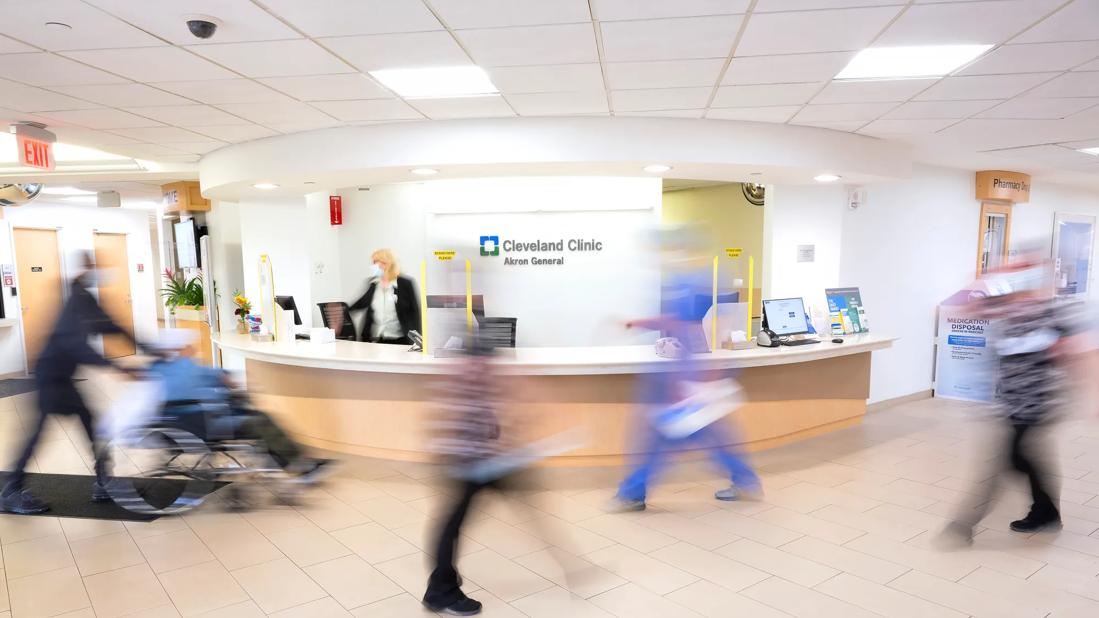How to keep people at the center of your back-to-business strategy

By James Merlino, MD
Advertisement
Cleveland Clinic is a non-profit academic medical center. Advertising on our site helps support our mission. We do not endorse non-Cleveland Clinic products or services. Policy
The COVID-19 pandemic has ushered in rapid, massive change to nearly every aspect of society. Economic vulnerabilities and racial disparities have been exposed; the food supply has been altered; education has been disrupted; and many workers remain at home. Yet, none of this takes into account the grief experienced by those who were infected with COVID-19 or lost loved ones to the virus, for whom life has been forever altered.
A global health crisis like the COVID-19 pandemic reminds us what is most important. As leaders, we must ensure that we are keeping people at the center of our planning.
Change is hard. In my role as Cleveland Clinic’s Chief Transformation Officer, I have the unique opportunity and duty to help our organization change. For me, clinical transformation means really thinking differently about how we deliver care. It’s not just about tweaking the edges, changing little things or making something more efficient. Clinical transformation is about how organizations can “do care” better. It’s about making care more personal, efficient, effective and less expensive. It’s no small task, but I think it starts with how you position safety, quality and patient centricity as the foundation such transformation.
At Cleveland Clinic, our motto is “Patients First.” I wrote about this a great deal in my 2014 book, Service Fanatics: How to Build Superior Customer Service the Cleveland Clinic Way. During COVID-19, however, we pivoted our focus a bit more toward our own caregivers.
Advertisement
Our decision-making has been centered on what is right for our people. We know that if we can keep our caregivers safe, then they will take good care of our patients. We’ve implemented broad systemic changes that impact every caregiver – from those in environmental services to the operating room and the C-suite – all to ensure the health and safety of our people so that they can care for others in their communities.
At the same time, the people in our communities have struggled – financially and otherwise. Although the experience of financial burden and stress is not confined to healthcare, those in healthcare have also been at the heart of the pandemic, providing care for people. This has added new levels of stress. We cared for patients in a rapidly evolving pandemic with only a developing sense of the symptoms and without clear treatment methods. We have experienced grief and loss.
If anyone believes we can just get back to normal after all of this, I think they’re kidding themselves. We absolutely have to factor in the impact that the pandemic has had on psycho-social status and mental health. It is going to be huge, and we have not come to fully appreciate that yet.
Throughout the pandemic, we’ve had nurses and other caregivers on the front lines, running at 150 miles per hour to care for patients with COVID-19. They’ve done an amazing job. At some point, these caregivers are going to hit a wall.
A couple of weeks ago, for example, I was rounding at Cleveland Clinic Akron General. We visited COVID-19 units, and asked many “how’s it going with COVID-19?” One of the first people I asked replied: “We were really scared, but we have it now. We know what to do. We’ll be fine.”
Advertisement
That really speaks to me — that character and courage. But that caregiver’s ability to handle these stressors comes with a cost. We just don’t know what it is yet.
Even as society opens back up, I think people recognize some of the changes brought about or accelerated by COVID-19 may be here to stay. People are willing to pay attention and live with restrictions. They are wearing masks, waiting in lines outside of retail stores to limit occupancy, staying home more, and using virtual health.
The pandemic is going to change the way people in all industries do business. As businesses and organizations seek to return to the new normal, many have reached out to healthcare institutions for advice and clarity about health and safety recommendations. In response, we’ve developed a number of industry-specific playbooks to guide the implementation of enhanced cleaning and safety precautions. Although there are no guarantees, together these tactics take into consideration the health and wellbeing of clients and employees.
Looking back over the past several months, we have met the challenges of the pandemic as a community – separated, and yet working together toward common goals. Now, as we look toward the future, I have optimism that, with character, courage and empathy, we can find our collective footing in these unprecedented times.
Advertisement
Advertisement

Patients report improved sense of smell and taste

Clinicians who are accustomed to uncertainty can do well by patients

Unique skin changes can occur after infection or vaccine

Cleveland Clinic analysis suggests that obtaining care for the virus might reveal a previously undiagnosed condition

As the pandemic evolves, rheumatologists must continue to be mindful of most vulnerable patients

Early results suggest positive outcomes from COVID-19 PrEP treatment

Could the virus have caused the condition or triggered previously undiagnosed disease?

Five categories of cutaneous abnormalities are associated with COVID-19